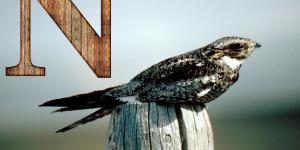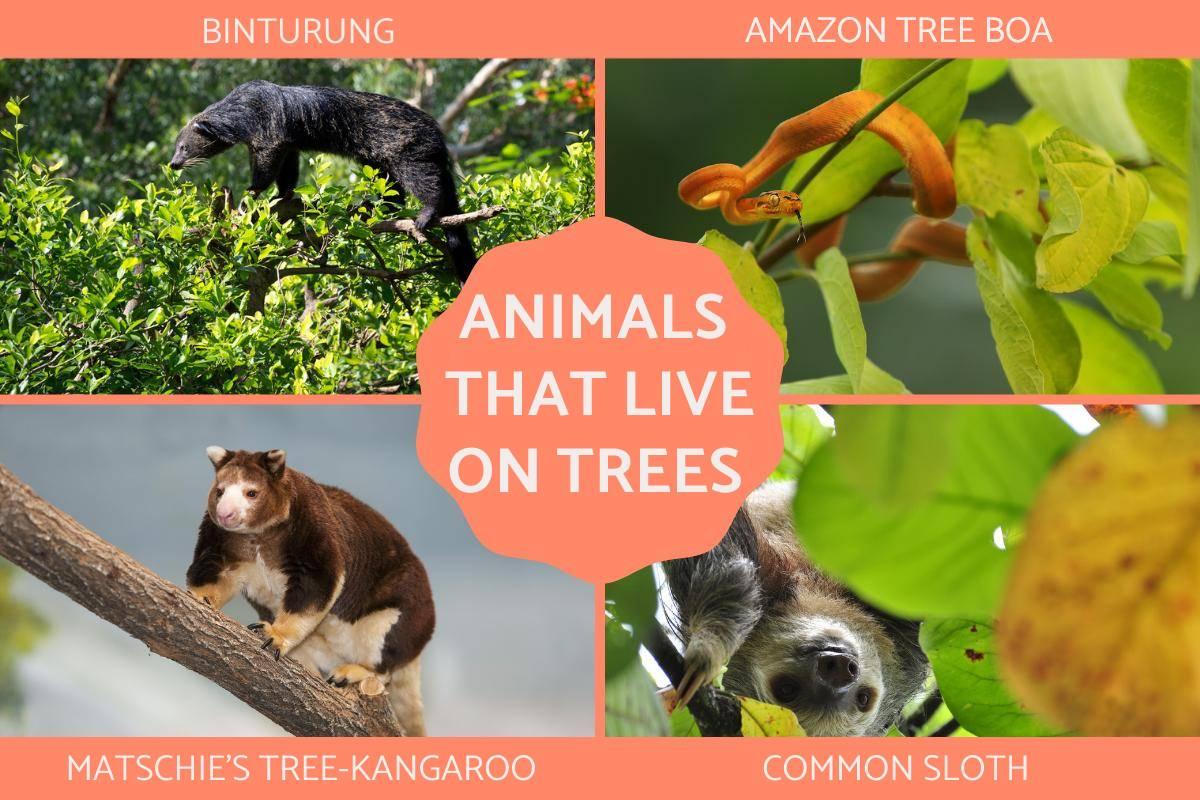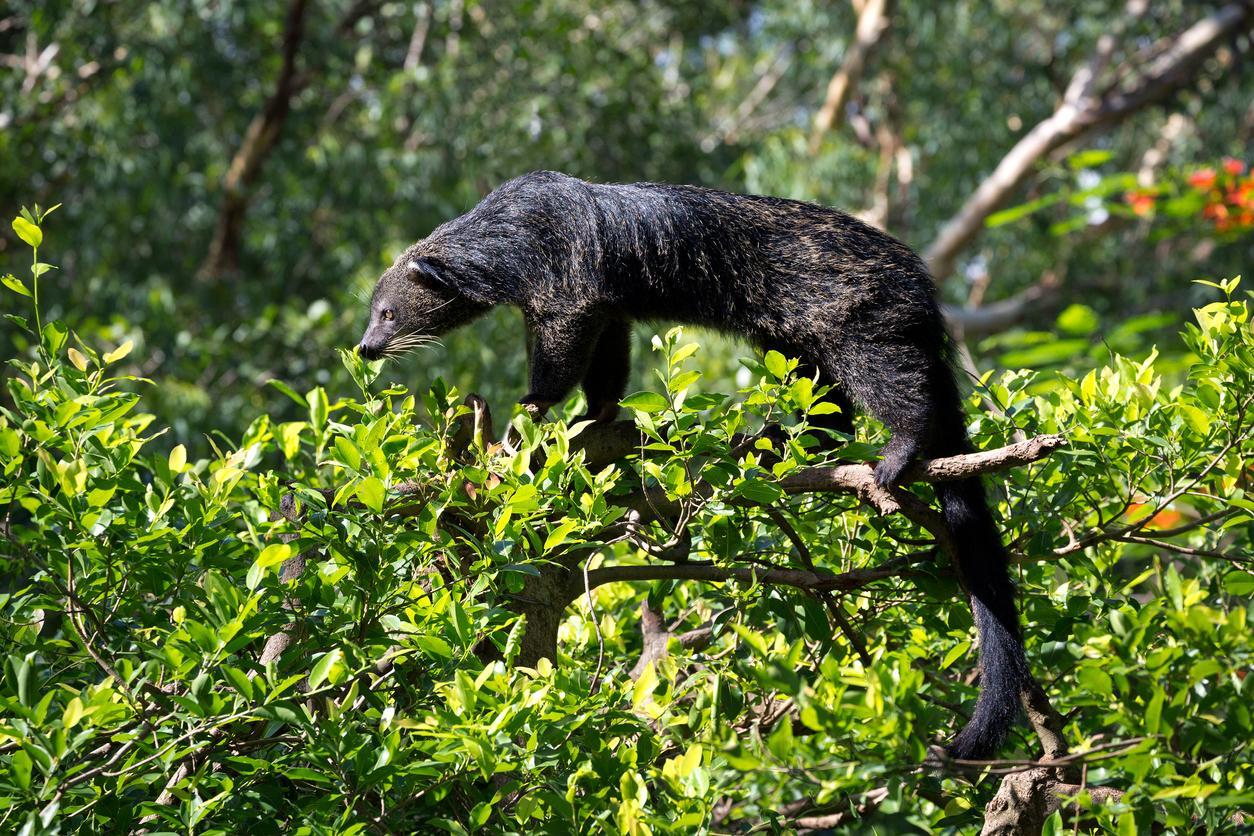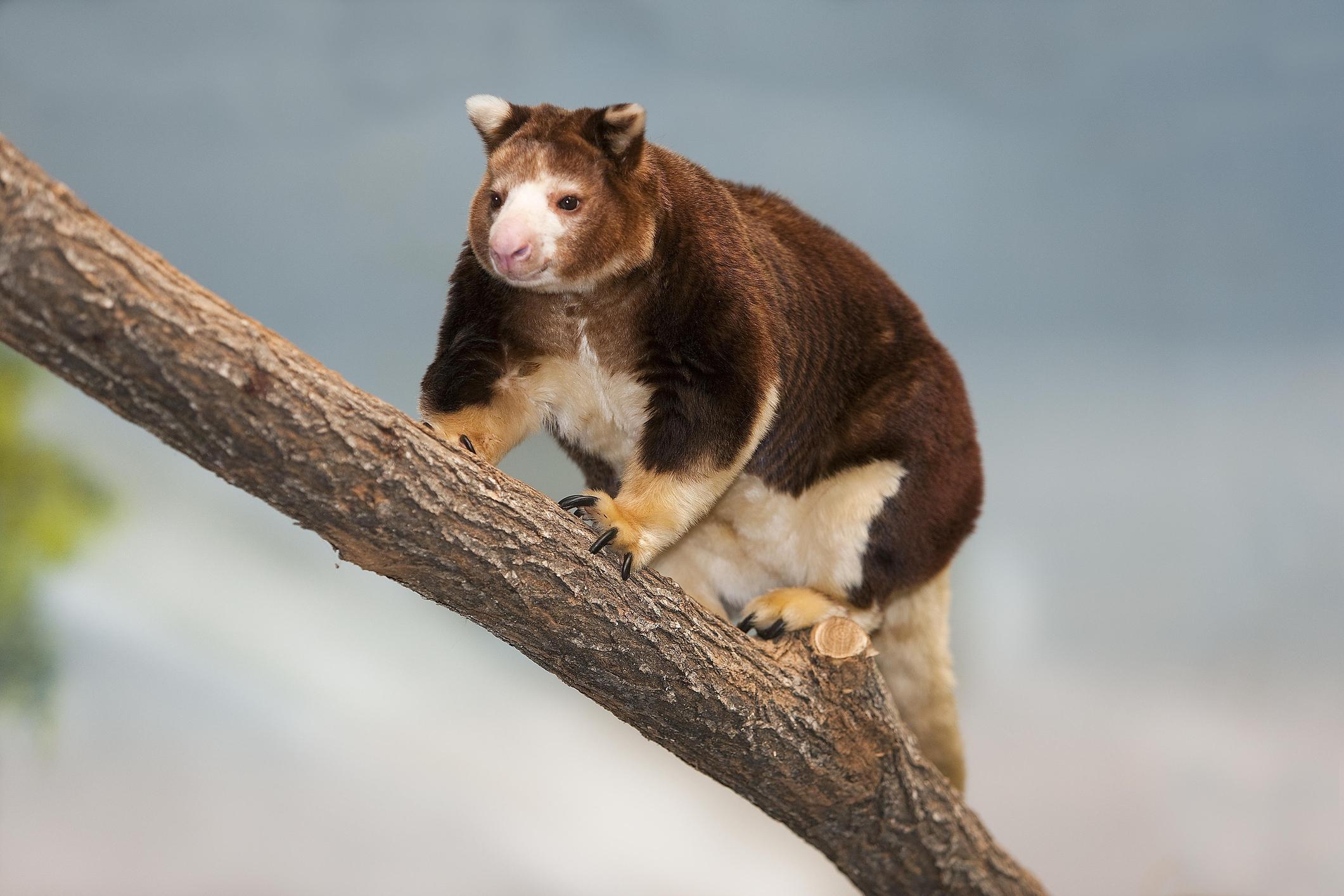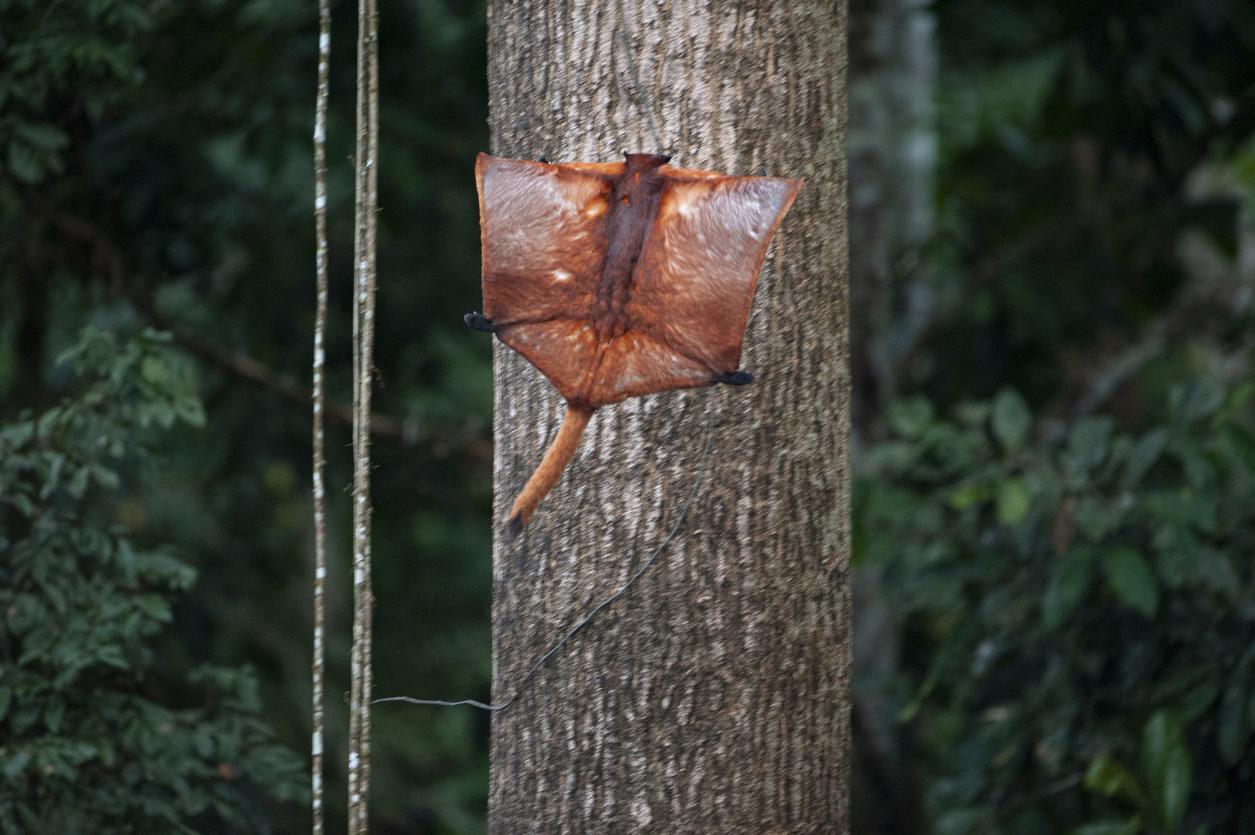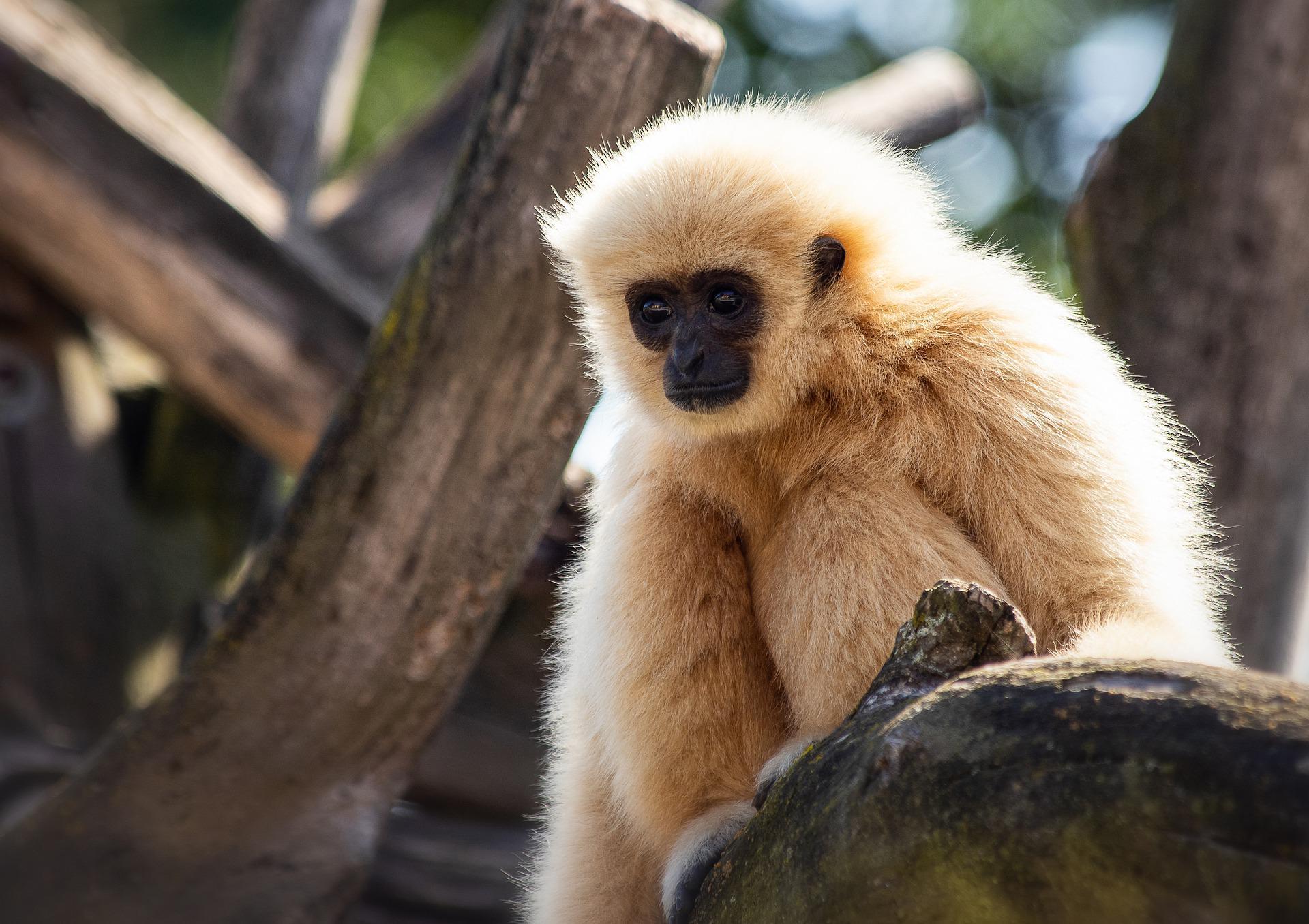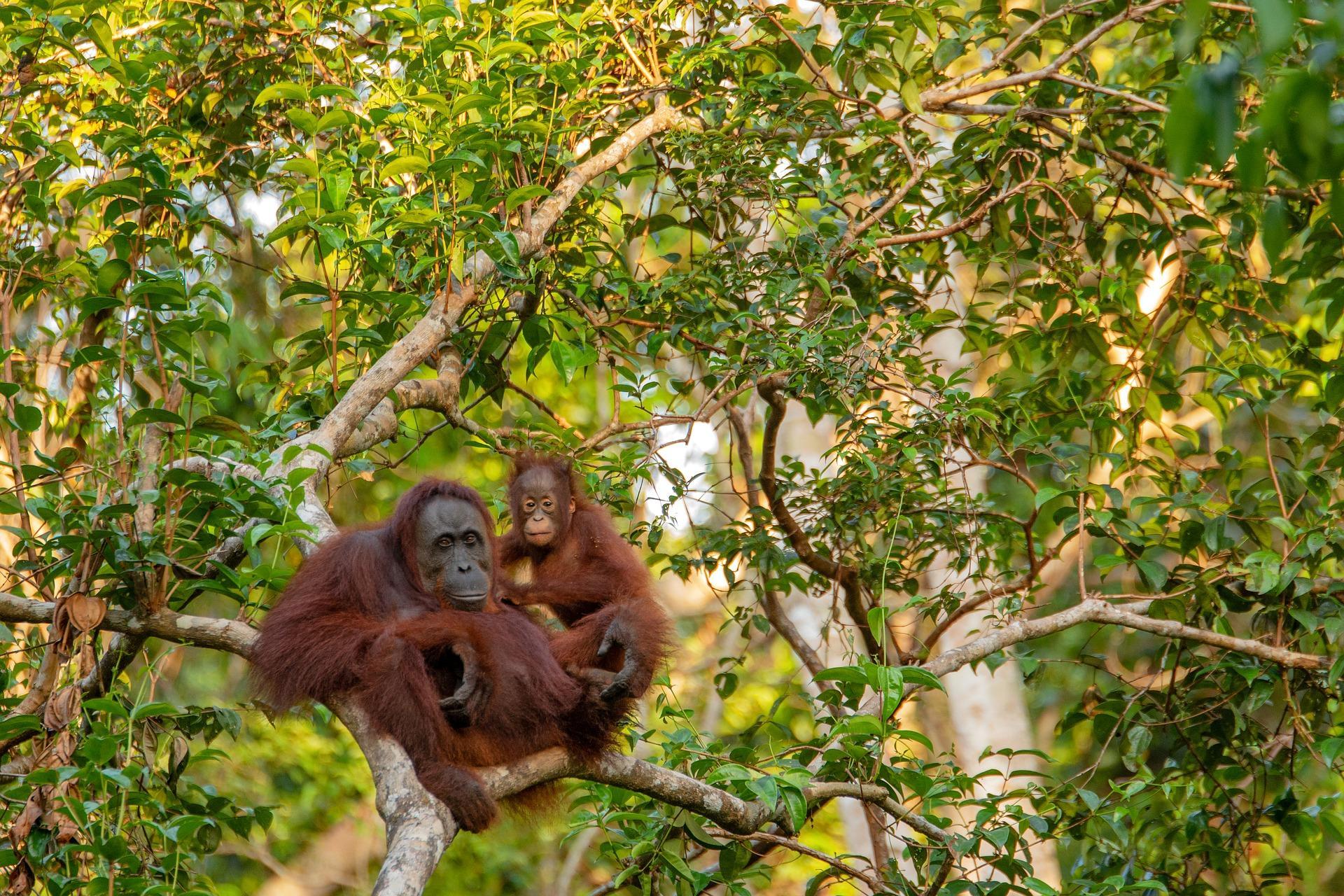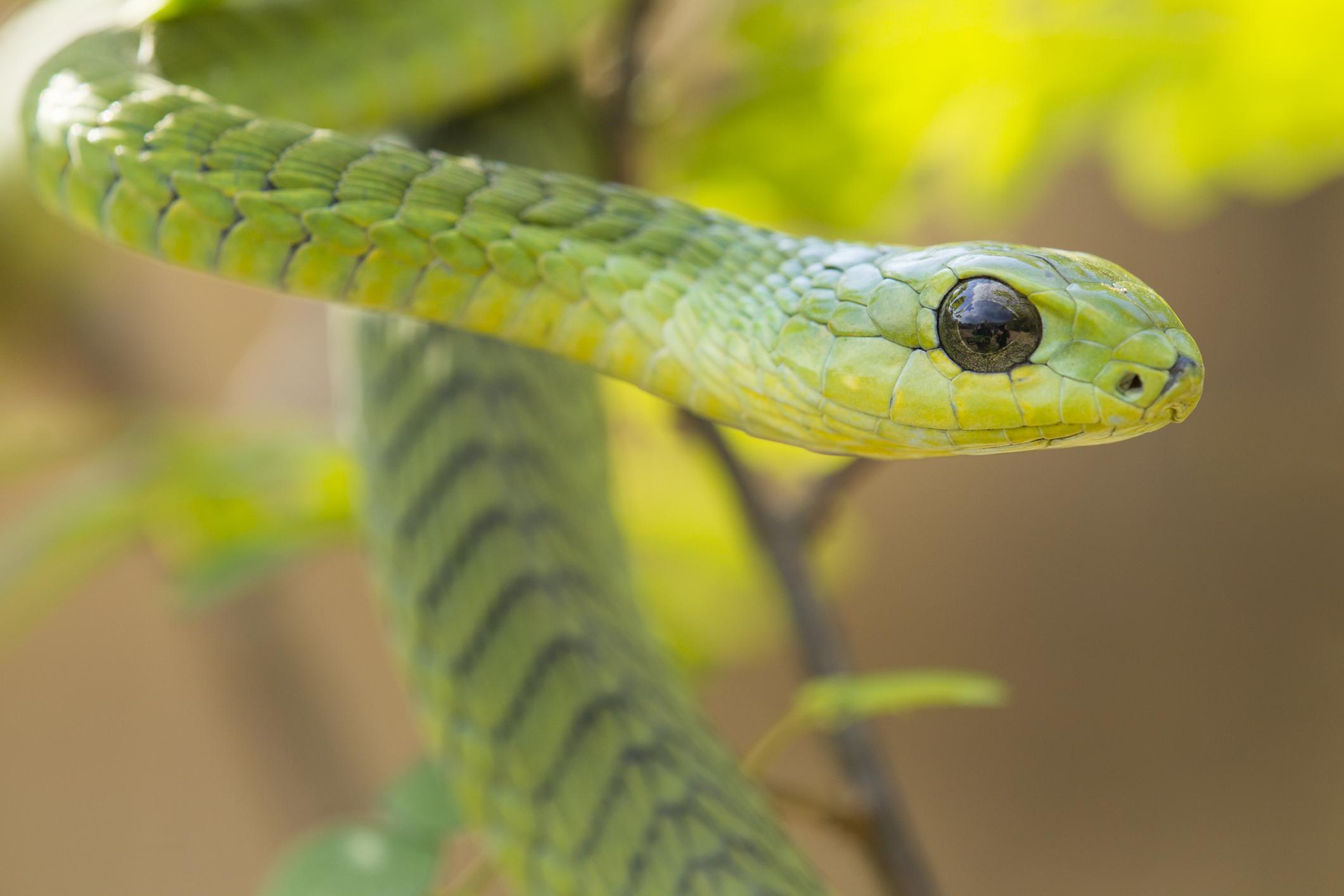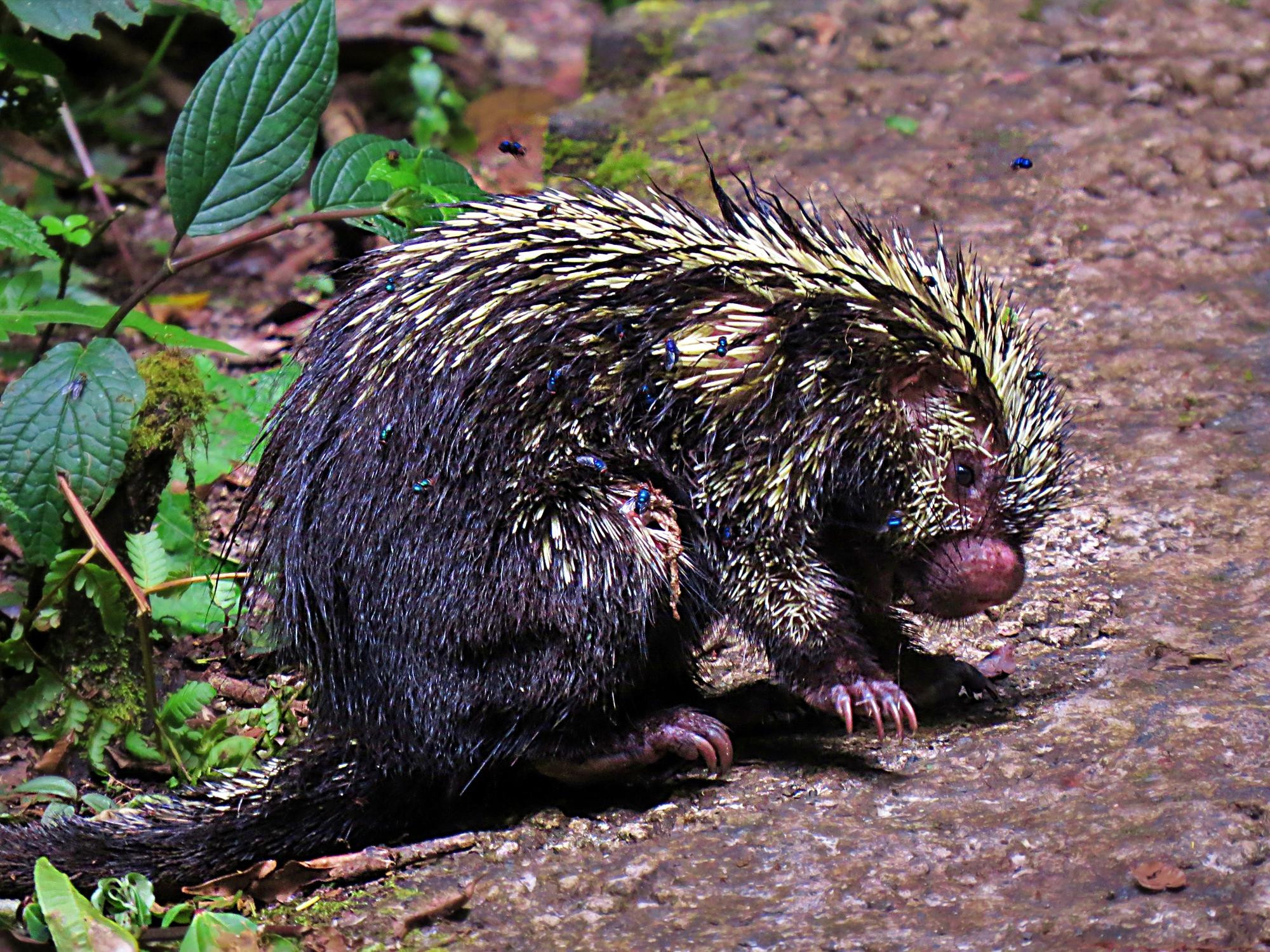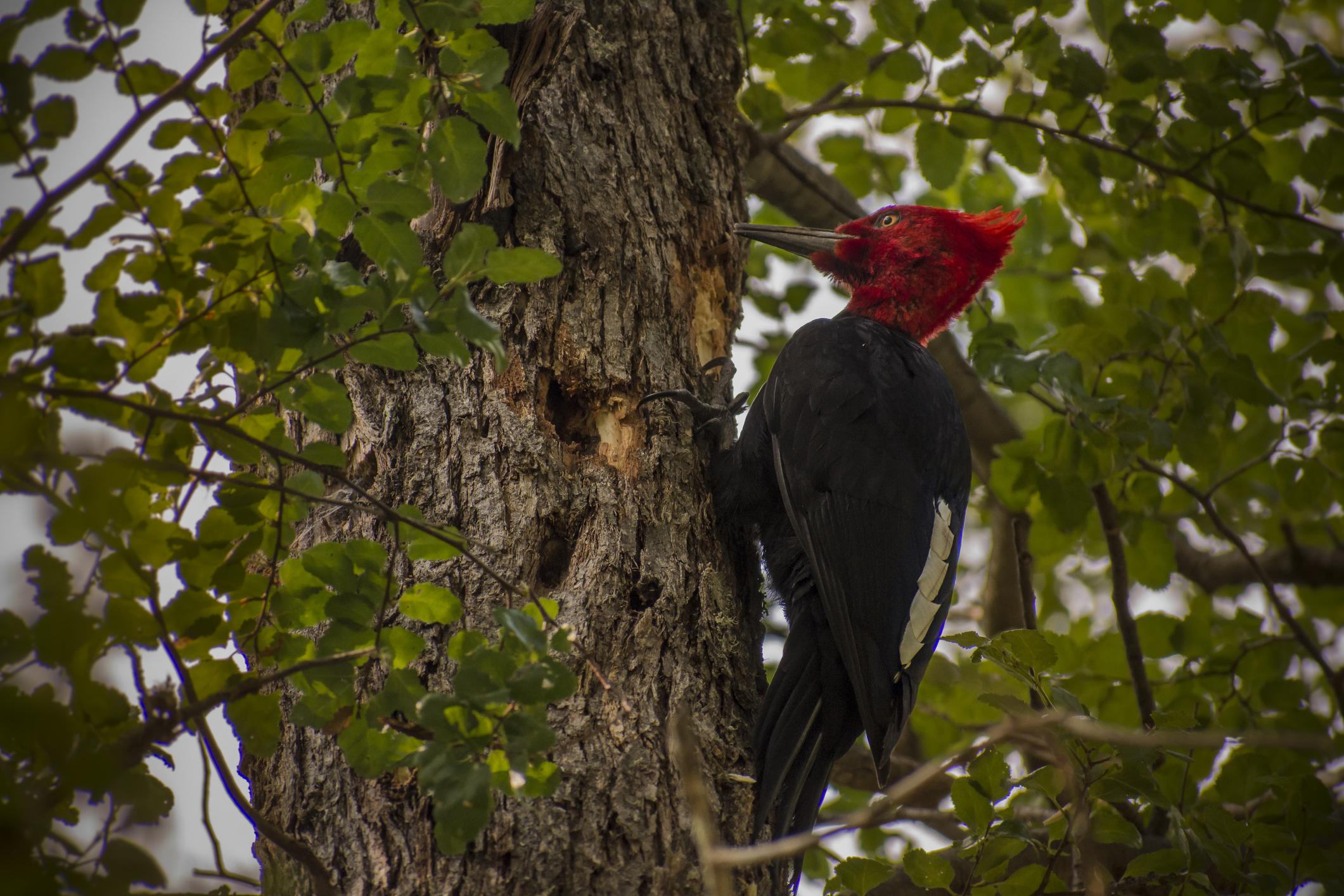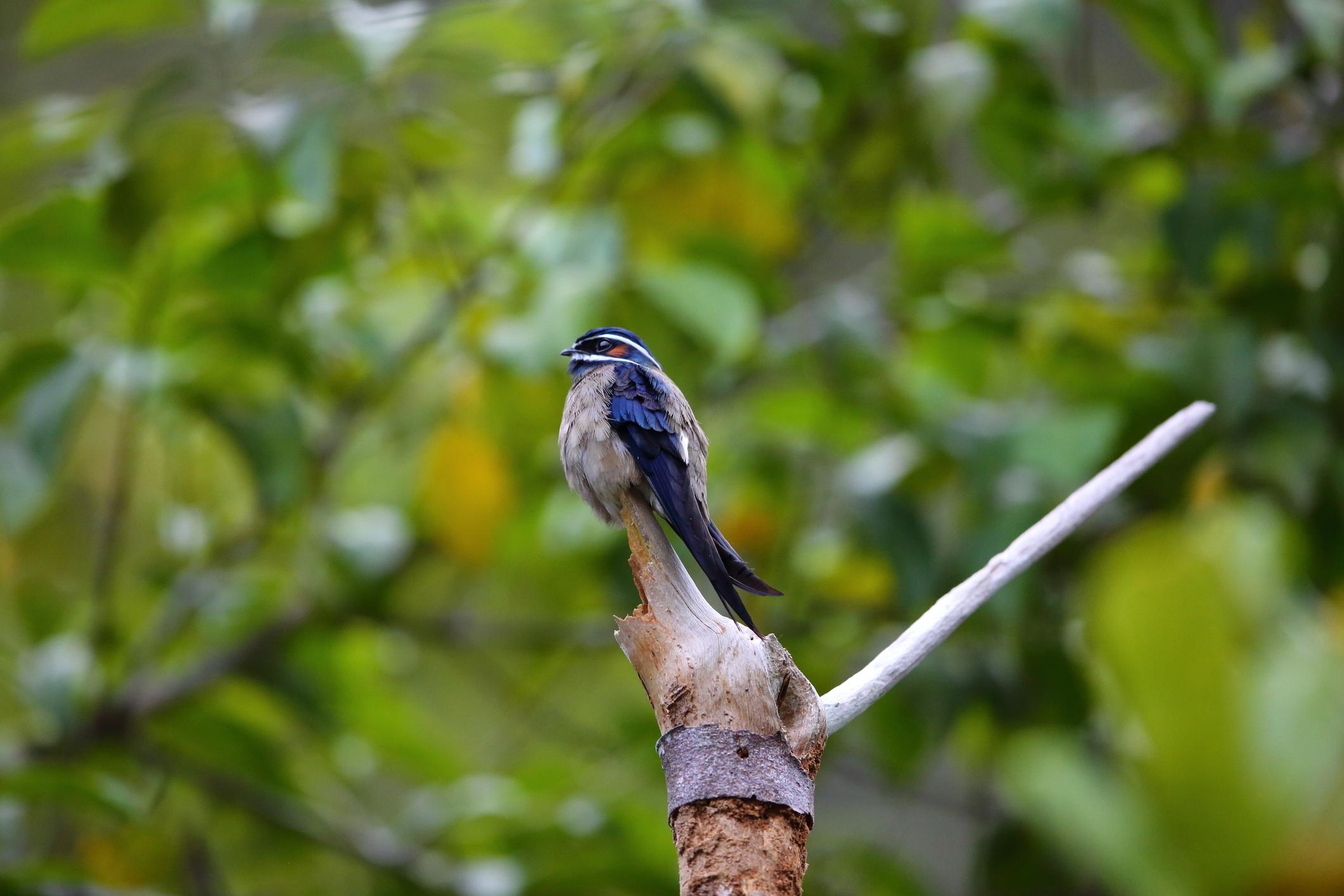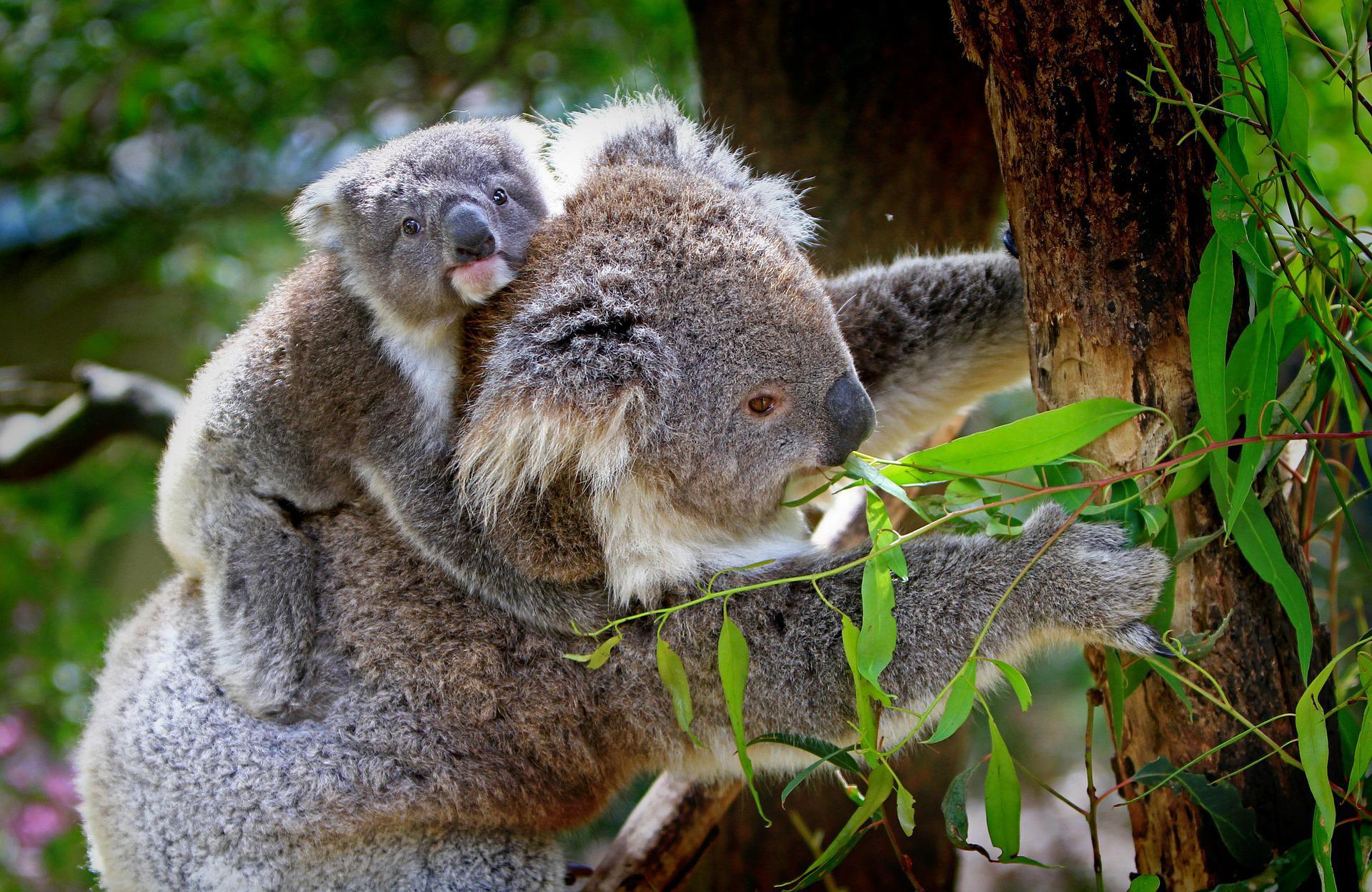Animals That Live in Trees


Animals and insects are distributed throughout the world over very different habitats. However, 80% of the world's plant and animal species live in forests and jungles, environments characterized by high tree density. In fact, there are many species that spend most of their time in trees and rarely come into contact with the ground because trees provide them with shelter, food, and a place to breed, among other things.
In the following AnimalWised article, we will introduce you to some of the animals that live in trees and explain their main characteristics.
- Allomerus decemarticulatus
- Binturong (Arctictis binturong)
- Tree-kangaroo
- Flying frogs
- Flying squirrels
- Common sloth (Choloepus hoffmanni)
- Gibbons
- Amazon tree boa (Corallus hortulanu)
- Orangutans
- Koalas
- Other arboreal animals
Allomerus decemarticulatus
This ant, native to the tropics of South America, lives in leaf pockets of a host plant species called Hirtella physophora. Their diet consists mainly of large insects that they prey on the plant, but they also feed on the nectar of the plant. These ants are able to capture their prey, which is much larger than themselves, by building a platform that serves as a trap for the unsuspecting prey. The ants tend to hide in the trap and attack when an insect lands on it.
On the other hand, the plant also benefits from these ants because they defend the plant vehemently against any animal or even any other plant that might harm it.
Image: antwiki.org
Ants are amazing animals. A single ant can carry 50 times its own body weight, and they even work together to move larger objects as a group! Read this other article if you want to learn more about ants and their different species.

Binturong (Arctictis binturong)
The binturong is a viviparous species that lives in various high forests in Asia. This mammal is the largest of its group, with an average weight of 33 lb (ca. 15 kg).
The binturong is long and heavy with short, powerful legs. They rarely jump, but climb skillfully, albeit slowly, and move with equal ease and confidence along the top of branches or upside down under them. They rely on their prehensile tail, which is almost as long as their body. Since binturongs are not very nimble, they must descend to the ground relatively often when moving among trees.
The binturong is an omnivore, feeding on small mammals, birds, fish, earthworms, insects, and fruits. Lacking the characteristics of a predatory mammal, most of the binturong's diet probably consists of plant matter. The binturong is an important disperser of seeds, especially those of the strangler fig, because it can scratch the tough outer covering of the seeds.
The binturong is classified as endangered on the IUCN Red List, as the population is estimated to have declined by more than 30% since the mid-1980s.
Continue reading this other article to learn more about Binturong, where they live and what their main characteristics are.

Tree-kangaroo
Tree kangaroos are marsupials of the genus Dendrolagus native to the tropical rainforests of New Guinea and far northeastern Queensland, as well as some of the islands in that region. Depending on the species, they weigh between 5 and 15 kilograms on average.
Because much of their lifestyle consists of climbing and jumping between trees, they have developed some physical adaptations, such as wide hind legs, front legs with curved claws, and long tails.
They have also evolved an effective method of locomotion. Tree kangaroos are slow and clumsy on the ground. In the trees, however, they are bold and agile. They climb by wrapping their front legs around the trunk of a tree and, while sliding their front legs, hopping up the tree with their powerful hind legs.
They are expert jumpers; jumps of 9 meters from one tree to another have been recorded, and they have the extraordinary ability to leap 18 meters without injury.
Their natural enemy is the amethyst python, which also lives and climbs in the treetops.
As an example, we can mention the Matschie's tree-kangaroo (Dendrolagus matschiei) that we see in the picture.
Kangaroos are marsupials, which means that the young are carried in a pouch until they are fully developed. If you have ever wondered how kangaroos are born, be sure to read this other article about the reproduction of kangaroos.

Flying frogs
A flying frog is a frog that has the ability to glide, that is, it can descend from trees at an angle of less than 45°. There are some frogs that can descend at an angle greater than 45°. However, these are not considered flying frogs and this ability is called parachuting.
This species can achieve these amazing aerodynamic abilities thanks to several physical adaptations. These include: enlarged hands and feet, full webbed feet between all fingers and toes, lateral skin flaps on arms and legs, and a lower weight per foot length compared to other frogs. This parallel development is thought to be an adaptation to their life in the trees, high above the ground.

Flying squirrels
Flying squirrels (scientifically called Pteromyini or Petauristini) are a tribe of 50 species of squirrels in the family Sciuridae.
Despite their name, they are not able to fly, at least not in the same way as birds. They are, however, able to glide from one tree to another using a patagium, a furred, parachute-like membrane of skin. They can also direct and control their glide path with their limbs and tail.
Anatomically, they are very similar to other squirrels, with a number of adaptations to fit their way of life. Not only do they have a patagium, but their limbs are longer and their hand and foot bones and distal vertebrae are shorter.
But flying squirrels are not the only ones that are arboreal. In general, squirrels spend much of their time climbing trees. Some squirrels even live inside trees, using the cavities to build their burrows.
Read this other article to learn more about squirrels and where they live.

Common sloth (Choloepus hoffmanni)
The Hoffmann's two-toed sloth (Choloepus hoffmanni), also known as the Northern two-toed sloth, is a species of sloth from Central and South America. Two-toed sloths live in the treetops of tropical rainforests.
It weighs a maximum of about 8 kg and lives almost exclusively in trees. This animal eats, mates and sleeps in the branches of trees. Most activities even take place hanging upside down.
They only come down about once every five days to defecate on the ground. These creatures also come down to the ground when they are looking for a new tree to live in or to discover a new food source. They move very slowly between tree branches, usually traveling no more than 30 meters per day.
Sloths are amazing animals. Did you know that from birth, sloths are able to lift their entire body weight upward with just one arm? For more information about sloths and many other fascinating facts about them, check out this other article.

Gibbons
Gibbons belong to a group of primates that includes four genera and 20 species, as well as several subspecies. They are also called the lesser apes or small apes. Gibbons differ from the great apes (chimpanzees, bonobos, gorillas, orangutans, and humans) in that they are smaller, have low sexual dimorphism, and do not build nests.
These small apes inhabit both tropical and subtropical jungles in Asia, including countries such as China, India, Bangladesh, and Sumatra.
They move using a locomotion method known as "brachiation," which entails swinging between tree branches. They are very agile and can move quickly through vegetation. In fact, they move at speeds of up to 55 km/h (ca. 34 mph). They can also make leaps of up to 8 m (26 ft) and walk bipedally with their arms raised to keep their balance. They are the fastest of all tree-dwelling, non-flying mammals.

Amazon tree boa (Corallus hortulanu)
Corallus hortulana is a non-venomous boa species found in South America. Although it can live in savannas and dry forests, it prefers the Amazon rainforest, especially in humid regions of countries such as Colombia and Venezuela, and on islands such as Trinidad and Tobago. Adults grow to an average length of 5 and 6.5 feet (ca. 2 m). This species has an immense variety of colors and patterns.
It can be found on the ground or in rivers, but its main habitat is 1 or 2 meters up in trees or other type of vegetation. It feeds mainly on mammals (including rodents and bats) and birds.
Another example of a tree snake wit the same habits as the above species is the emerald boa (Collarus caninus).
Snakes are fascinating animals. Their striking colors, strange way of moving and insatiable appetite can impress anyone. Since ancient times, these reptiles have been part of the culture of many societies and are among the most famous animals studied by science. Check out this other article if you want to learn more about snakes, especially which are the biggest snakes.

Orangutans
Orangutans are great apes native to the rainforests of Indonesia and Malaysia. Currently, three species of orangutans are known, grouped in the genus Pongo.
Orangutans are the most arboreal of the great apes and spend most of their time in trees. They have relatively long arms and short legs, and their bodies are covered with reddish-brown hair. Usually, females weigh about 35 kg, while males can reach up to 75 kg.
Among the great apes, orangutans prefer to stay in trees, where they feed mainly on fruits, but also on insects, eggs, honey, and plants. Orangutans are among the most intelligent primates. They use a variety of sophisticated tools and build elaborate sleeping nests out of branches and foliage every night.
All three orangutan species are considered critically endangered. Human activities have led to severe population and range declines. Threats to wild orangutan populations include poaching, habitat destruction and deforestation, and illegal pet trade.

Koalas
The koala or, inaccurately, koala bear (Phascolarctos cinereus) is a herbivorous marsupial native to Australia. It is the only living member of the family Phascolarctidae and its closest living relatives are the wombats.
Koalas typically live in open eucalypt forests, whose leaves make up most of their diet. This is because this eucalyptus food has limited nutritional and caloric content. In addition, eucalyptus is toxic, so the koala's digestive system must work hard to digest it, break down the toxins, and extract the limited nutrients. For this reason, koalas are largely sedentary and are known to sleep up to 20 hours a day.
Koalas are most comfortable high up in the treetops and only come down to the ground to change trees or move to another area.

Other arboreal animals
As mentioned earlier, forests provide a home for a variety of animals that live in trees. The above are only a representative sample. You can learn more about other animals that live in trees, either in their branches or in their trunks, by looking at the following list:
- Amazon dwarf squirrel (Microsciurus flaviventer)
- Boomslang (Dispholidus typus)
- Silky anteater (Cyclopes didactylus)
- Ornate tree lizard (Urosaurus ornatus)
- Mexican hairy dwarf porcupine (Sphiggurus mexicanus)
- Magellanic woodpecker (Campephilus magellanicus)
- Common iguana (Iguana iguana)
- Whiskered treeswift (Hemiprocne comata )
- Howler monkey ( Alouatta palliata )
- Common chameleon (Chamaeleo chamaeleon)
- Lemurs (Lemuroidea)
- Koala ( Pascolarctos cinereus )
- Tarantulas (subfamily Stromatopelminae)
- Mushroomtongue salamander (Bolitoglossa engelhardti)
- Great horned owl (Bubo virginianus)
- Colugo (Cynocephalidae)
- Red squirrel (Sciurus vulgaris)
- Turquoise-fronted amazon (Amazona aestiva)
- Achantinella (Achantinella)
- Mexican alligator lizard (Abronia graminea)
In summary, we can say that our planet is full of extraordinary organisms and animals that can live in all kinds of environments. But did you know that organisms that live in extreme environments are called extremophiles? Continue reading this other article to learn more about animals and organisms that live in extreme environments.
If you want to read similar articles to Animals That Live in Trees, we recommend you visit our Facts about the animal kingdom category.
- STI (2021). Integrated Taxonomic Information System . Available at: https://www.itis.gov/
- Myers, P., R. Espinosa, CS Parr, T. Jones, GS Hammond, and TA Dewey. (2022). Animal Diversity website. Available at: https://animaldiversity.org
Animals That Live in Trees photos












